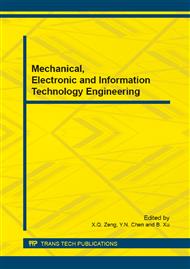p.172
p.176
p.180
p.184
p.189
p.196
p.203
p.209
p.214
Research and Simulation on Repairable Device Preventive Maintenance Control Policy
Abstract:
In consideration of the situation that the conventional preventive maintenance inspection cycle of the repairable device is not be changed as long as it is determined, based on continuous-time Markov processes, the repairable device preventive maintenance control strategy is studied. The preventive maintenance model is established, i.e., its state transition diagram, steady state value of the model is calculated, the control policy of device’s check rates based on device status is proposed, and the proposed control policy is simulated and confirmed using MATLAB. Simulation results show that under the proposed control policy rule, the actual operation curve of the system can well track the desired operation curve of the system, and finally can achieve the desired steady state value. Studies have shown that the method has some help to strengthen device maintenance management, improve device maintenance strategies, ensure that the device is repaired according to the state, and reduce maintenance costs of the device.
Info:
Periodical:
Pages:
189-195
Citation:
Online since:
March 2015
Price:
Сopyright:
© 2015 Trans Tech Publications Ltd. All Rights Reserved
Share:
Citation:


